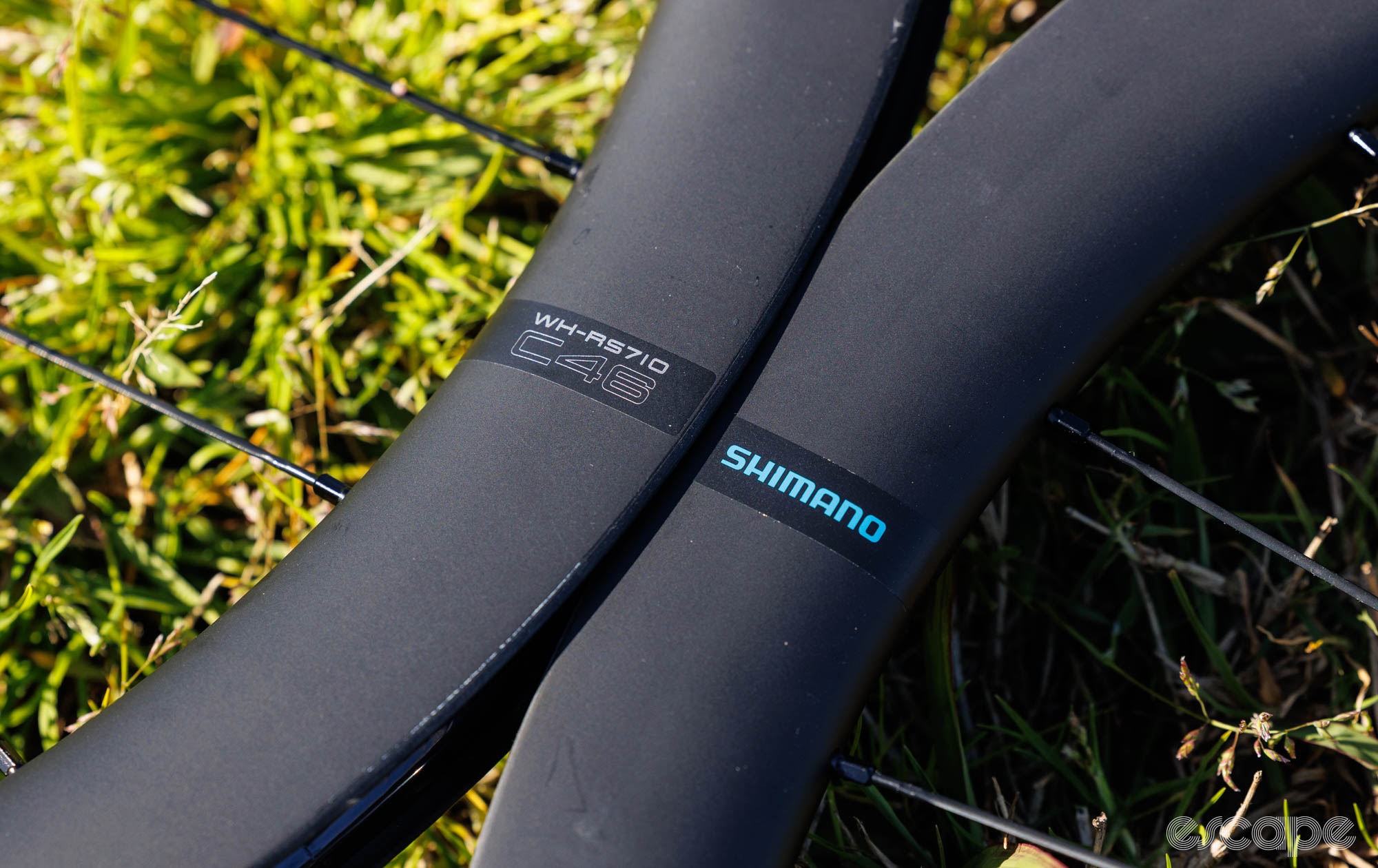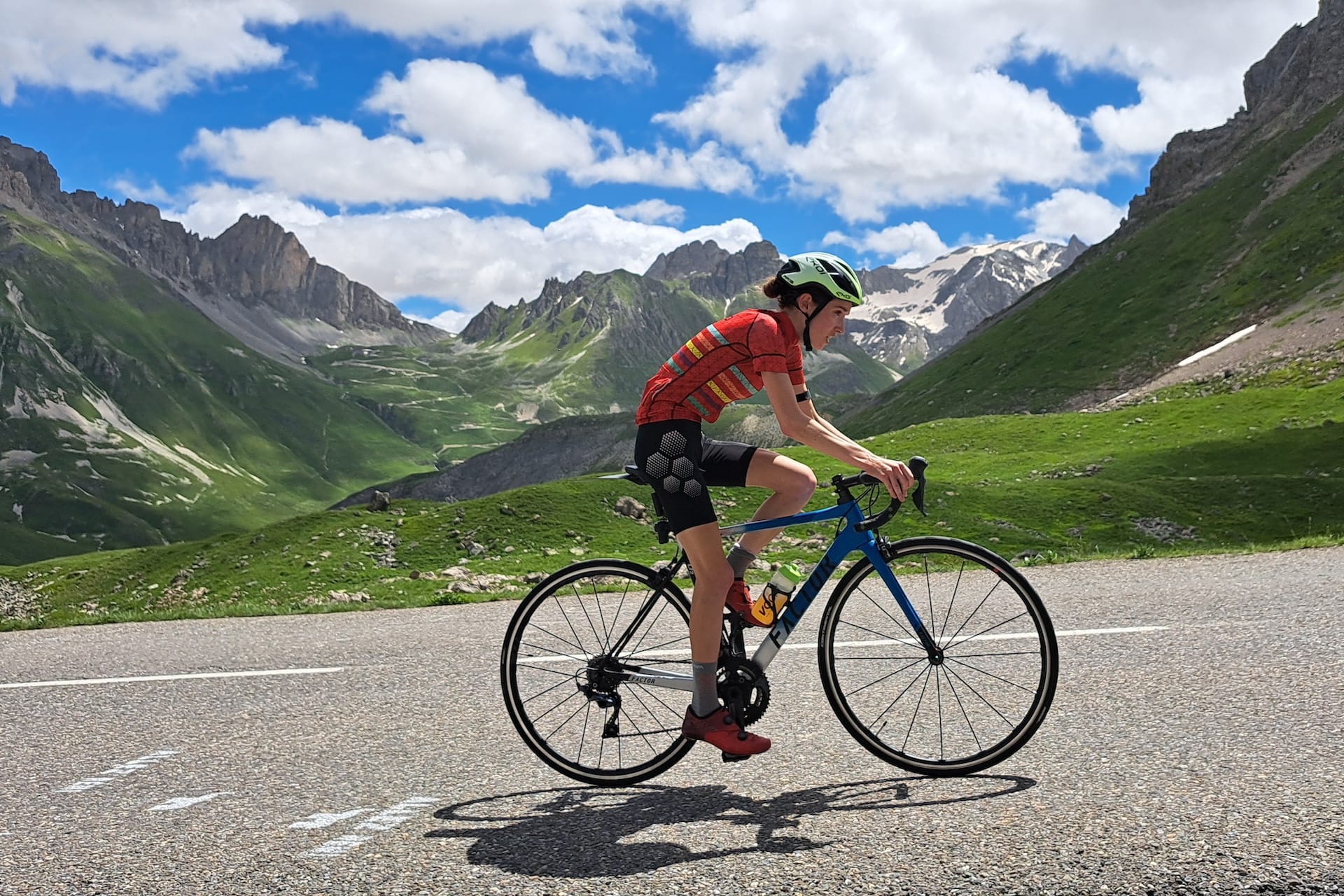Love or hate them, disc brakes have changed modern road bikes in ways that extend well beyond the brakes themselves. One such example is seen in the wheels: carbon rims and rim brakes were a common pairing, but it was the fear of heat-related rim failures that kept most riders away from the cheaper, and unknown, brands. Disc brakes overcame such a fear, and as a result, we’ve seen carbon rims become somewhat of a commodity item, with price points falling to match.
There are many examples of this trickledown, but perhaps one of the more obvious is Shimano’s relatively new 105-level offerings. Available in two depths and only for disc brakes, these 105 hoops retail for US$1,050 / AU$1,780 - not the cheapest price you’ll find for a carbon road wheelset, but certainly a whole lot more affordable than where Shimano’s own carbon wheels were previously.
Before we continue, a quick summary:
The short of it: Shimano's most affordable carbon wheelset designed to bring aero performance to more budget disc brake road bikes.
Good stuff: Benchmark tyre fitment and internal rim shaping that's a breeze to set up. Subtle graphics. Well-proven design that every mechanic knows how to service and can fit a regular spoke to. Fair price.
Bad stuff: Locked into a single axle size and freehub body style. External rim width is on the narrow side for modern tyre widths. Lacklustre warranty. So-so weight. Stock tubeless valves.
The first 105 carbon wheel
Based simply on specifications, there’s not much to tell about Shimano’s RS710 wheels which sit within the 105 Di2 road lineup. Even the company describes them with such riveting copy as a “simple design that can be easily matched to any bike". There’s the C32 at 32 mm depth, and the C46, at, you guessed it, 46 mm depth. It is noteworthy that Shimano sells its front and rear wheels separately, meaning you can mix and match the C32 and C46 as you please.

Both wheelsets feature the same 21 mm internal rim width (21.4 mm measured), with a 28 mm external profile. With hooks on the rims, the wheels are ready to be run with just about any tubeless or clincher (inner tube) tyres of your choosing.
The same 24 double-butted, bladed, and J-bend spoke count is seen on the front and rear wheels, and where some wheels use front and rear-specific rims with differing profiles, these Shimano hoops keep it all the same in depth. For the C46, that's with a profile that’s more U-shaped than V-shaped.
At the centre sit Shimano’s own cup-and-cone bearing hubs with Centerlock brake rotor mounts. And as I’ll return to, this bearing design means the hubs are locked into a single choice of axle fitment (100 x 12 mm front, 142 x 12 mm rear), and a Shimano HG-style freehub body which fits everything from Shimano’s eight- through to 12-speed road cassettes. The freehub offers a classic Shimano 18-points of engagement, or just 20°.
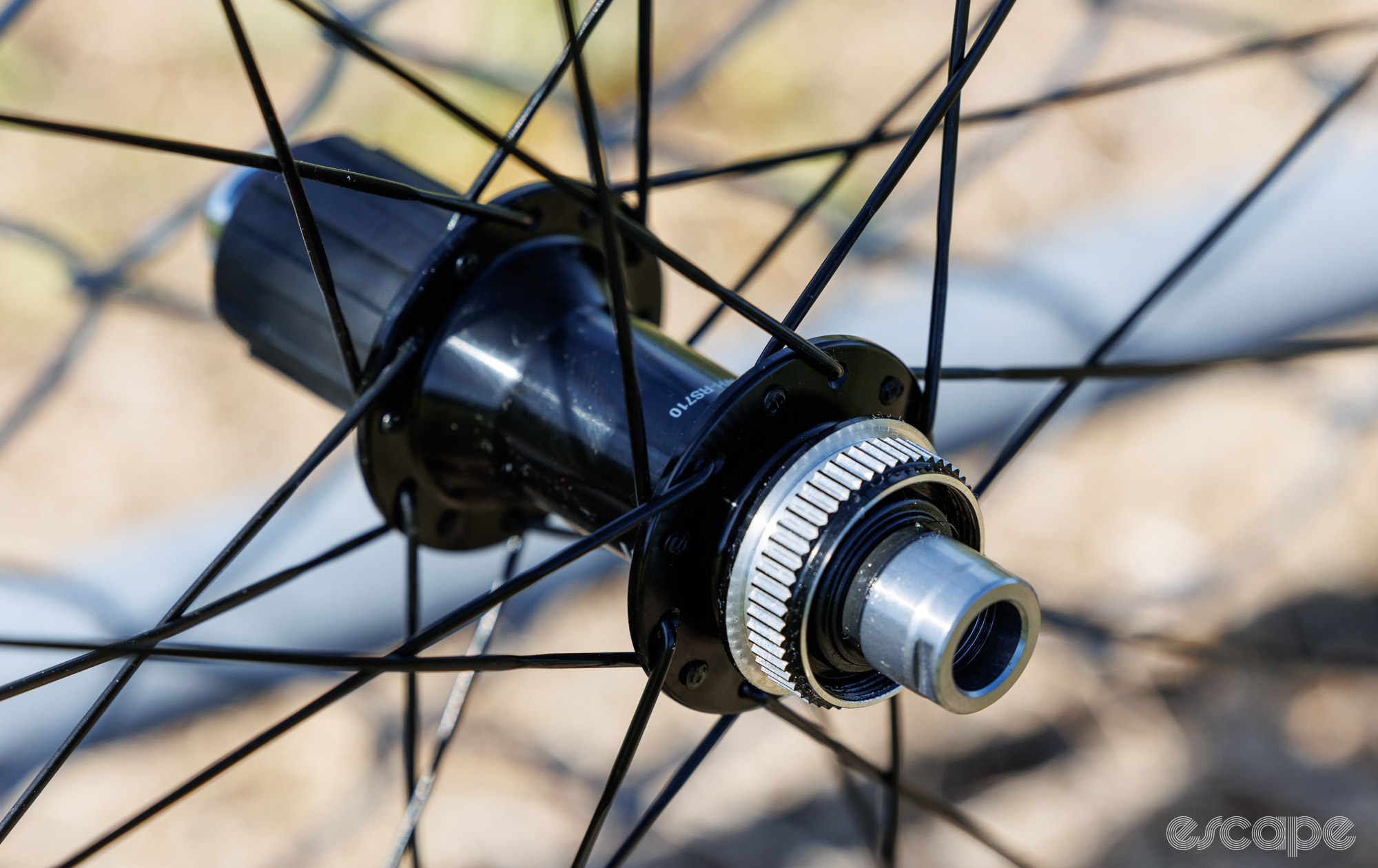
What does spending more within Shimano’s range get you?
At a modest bump to US$1,400 / AU$2,230, the Ultegra-level R8170 wheels are available in 36, 50, and 60 mm depth options. The Ultegra carbon rims share the same 21 mm internal and 28 mm external proportions and tubeless compatibility as the 105 wheels, however, they provide deeper depths at a lower weight. Meanwhile, higher-end hubs help save further weight while improving bearing efficiency.
Stepping up to Dura-Ace (Shimano's best) introduces further weight savings in the hubs and spokes, but the rims remain the same as those found on the Ultegra R8170 wheels.
However, those weight differences aren’t as significant as you may expect. A pair of Ultegra R8170 C50 wheels carry a claimed weight of 1,570 grams, while the marginally shallower R710 C46s offer a claimed weight of 1,612 g (the actual weight of my sample was 1,638 g with supplied tubeless tape and valves).
Super simple setup
Getting rolling on the RS710 wheels is a simple affair. Out of the box, the hubs await a regular HG-style cassette, centerlock disc rotors (or six-bolt rotors with an adapter), and a road frame with 12 mm thru-axles.
The wheels come pre-taped for tubeless use, although that doesn’t mean you need to run tubeless. If you do want to go tubeless, Shimano also provides its tubeless valves, so all you’ll need is a pair of tubeless tyres and some sealant.
With each tyre install and removal, I was pleasantly reminded that tubeless doesn’t need to be a fight. Shimano seemingly has its rim dimensions and shaping dialled, which eases dealing with usually tight tyres. For example, I needed tyre levers to install Specialized’s latest Turbo tubeless tyres on the company’s own wheels, but those same tyres fit onto the 105 wheels with nothing but bare hands and a decent technique. And from there, the tyres popped into place with a regular floor pump. These rims consistently provided some of the most accessible experiences with tubeless road I’ve ever had.
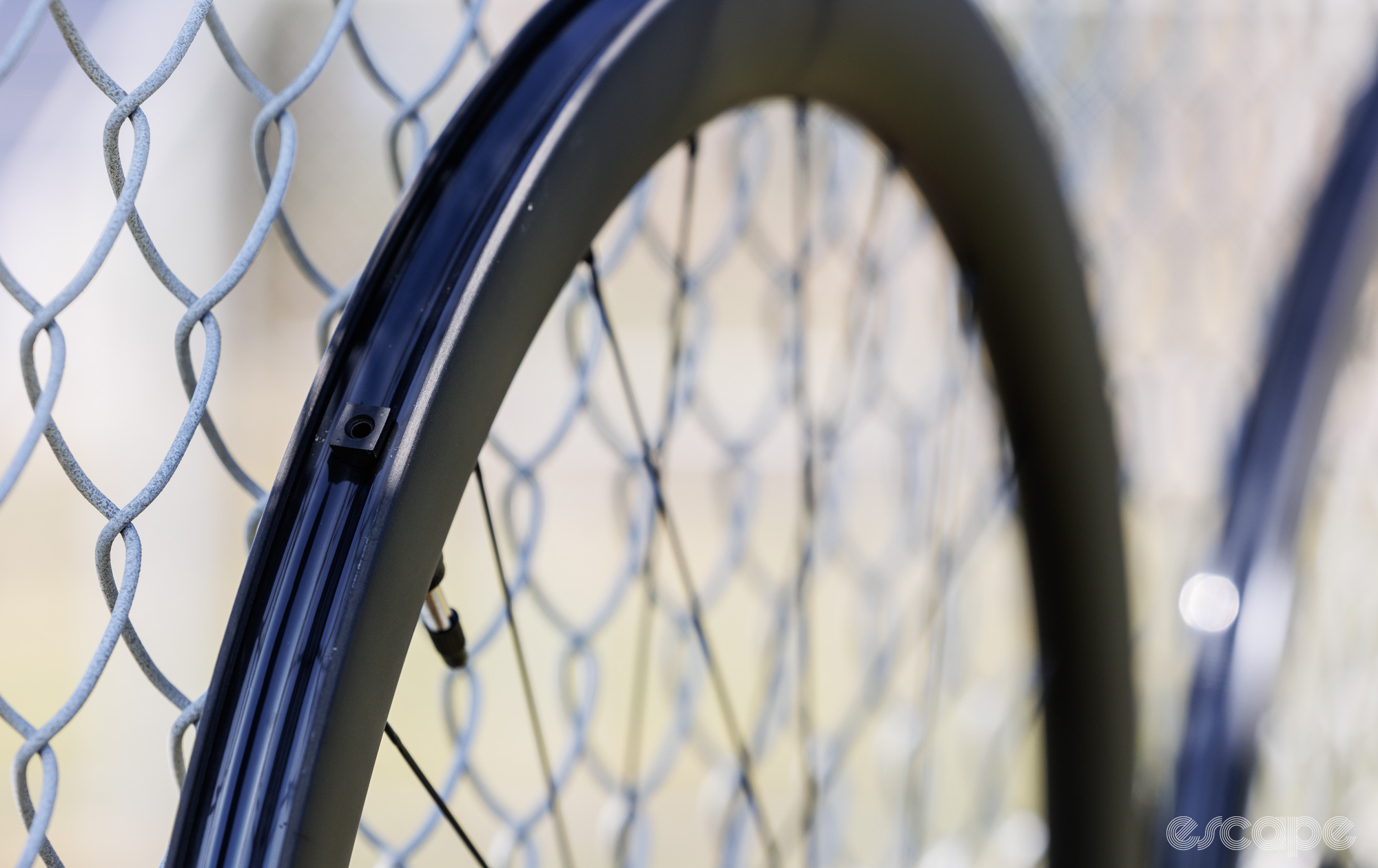
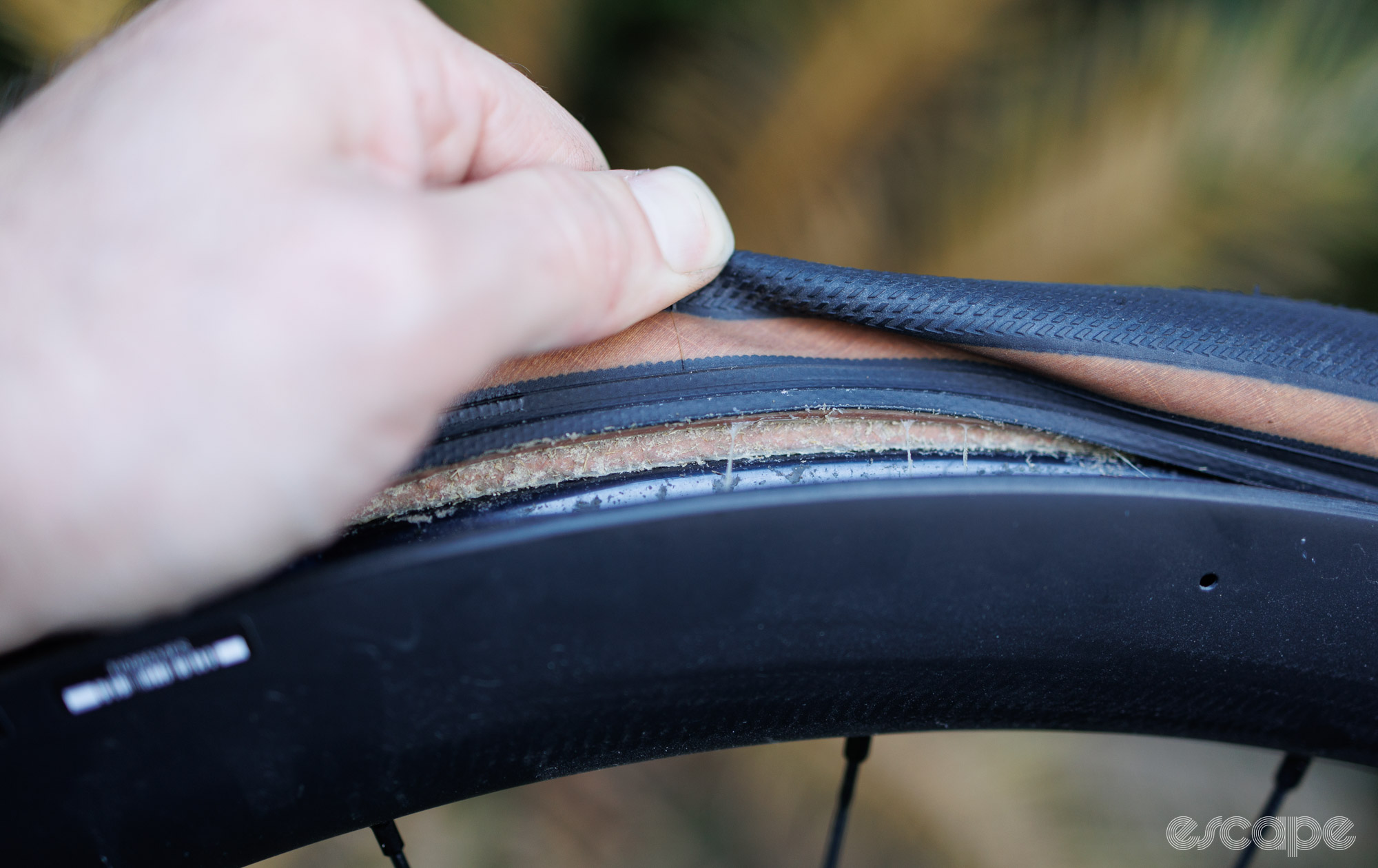
You can tell a lot about the build quality of a wheel based on how even the spoke tension is out of the box, and how consistent those numbers stay after some use. In the former instance, the RS710 wheels are about average for a pre-built wheel of this price point, and unfortunately, the average is far from perfect. Thankfully the wheels didn’t negatively change, lose spoke tension, or fall out of true compared to how they were delivered.
The left-hand spokes on the front wheel had a fairly wide deviation of 14%, while the right side was a more respectable 7%. Meanwhile, the left-hand spokes on the rear wheel deviated by a fairly large 24%, with the right-side (drive side) fairing a little better at 8%.
In reality, these figures won’t mean much to users of these wheels, and they certainly don’t result in anything noticeable when it comes to riding. However, the greater the deviations, the more likely spokes will eventually fail through fatigue (typically only seen after a few years of use). Certainly, no such issues presented themselves in my time testing these wheels.
Aesthetically these wheels are super bland and lack much in the way of identifying features, but I find that quite appealing. Shimano has kept its logos to a minimum and that means they looked good on the various bikes I tried them on.
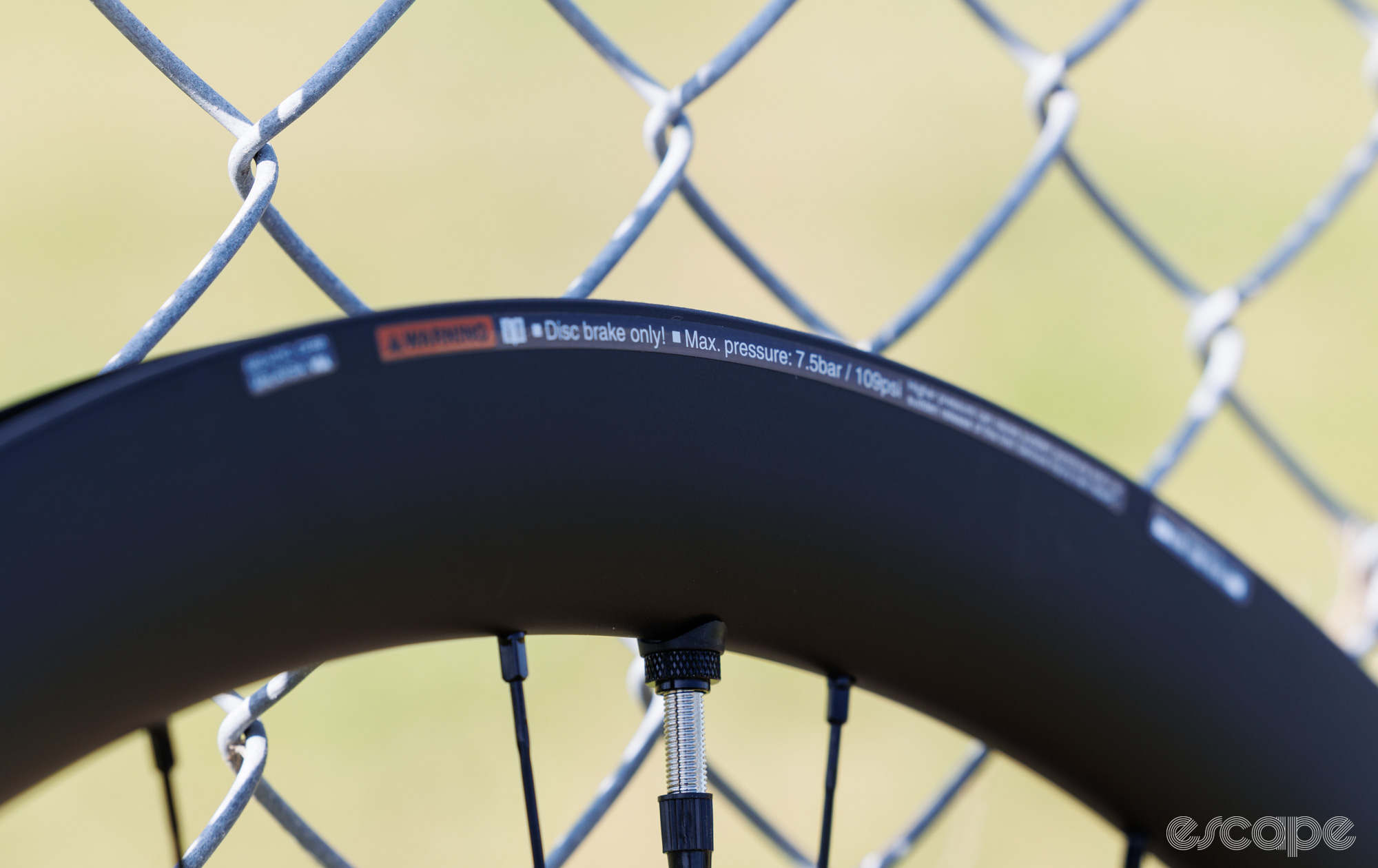
Pros and cons of cup-and-cone bearing hubs
Shimano is one of the last remaining hold-outs of the once-ubiquitous cup-and-cone hub. Referring to the bearing design, a cup and cone hub uses ball bearings that are sandwiched between and turn on two angled bearing races – one forming the shape of a cup (the outer race), and the other the shape of a cone (the inner race). With Shimano hubs, the cup bearing race is a permanent fixture of the hub shell, while the cone is effectively a threaded nut that can be adjusted along the axle to fine-tune bearing preload.
By contrast, just about every other wheelset option on the market uses cartridge (aka sealed) bearings. This sees the bearing races, ball bearings, and even seals integrated together into a single unit that is then pressed into a cylindrical bore.
There are many reasons to love cup-and-cone hubs. The angular nature of those bearing races is arguably superior at handling the off-axis forces consistently put through a bicycle wheel. You can fine-tune the bearing preload adjustment to create a freely rolling hub. Meanwhile, bearing servicing merely requires some suitably sized thin spanners (cone wrenches), grease, and a little know-how.
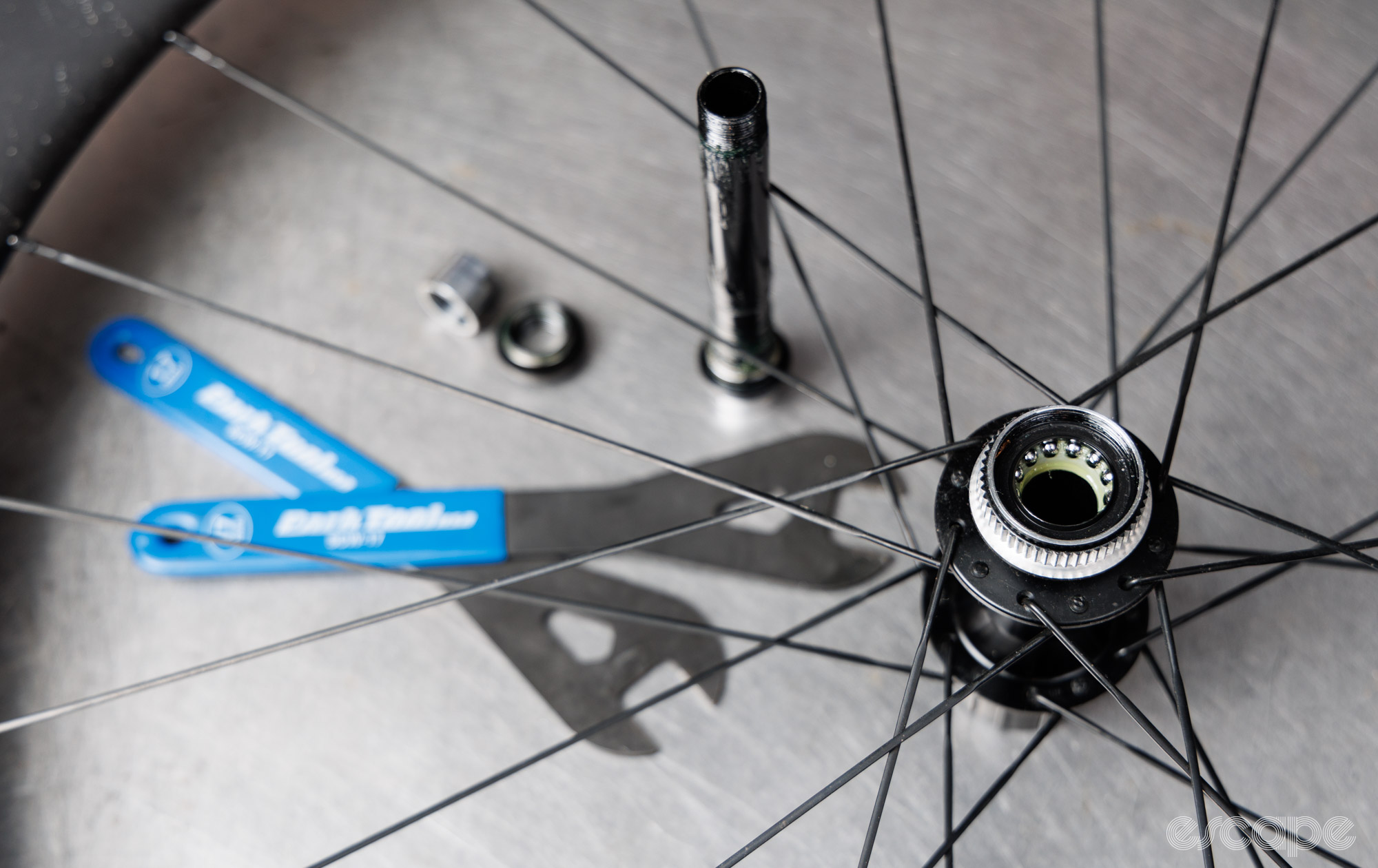
Unfortunately, the list of downsides explains why Shimano and Campagnolo (including Fulcrum) are the last two brands using variants of cup-and-cones hubs at the top tier level.
Top of the list, and as already mentioned, is the limited compatibility. Many cartridge bearing hubs allow you to simply swap the axle type and size with different press-on end caps, while you can often replace the entire freehub with similar ease, too. By contrast, Shimano doesn’t offer the parts required to change the axle type, and as a result, these 105 wheels will always be locked into the 142 x 12 and 100 x 12 axle format. It’s likely for this reason that a number of hubs within Shimano’s latest CUES release now feature a cartridge-bearing design.
Similarly, while almost every road wheel and hub brand in the world offers a choice of at least Shimano HG11, SRAM XDR, and often Campagnolo freehub body fitments to suit a variety of cassette designs, that’s just not the case for Shimano wheels. Shimano’s 105 wheels are now and forever locked into using an HG-style cassette, and so if in future you ever wanted to install a new SRAM 12-speed or even Shimano Microspline mountain bike cassette, you’d need a new rear wheel. That surely limits what bikes you can and can’t use these wheels on in future.
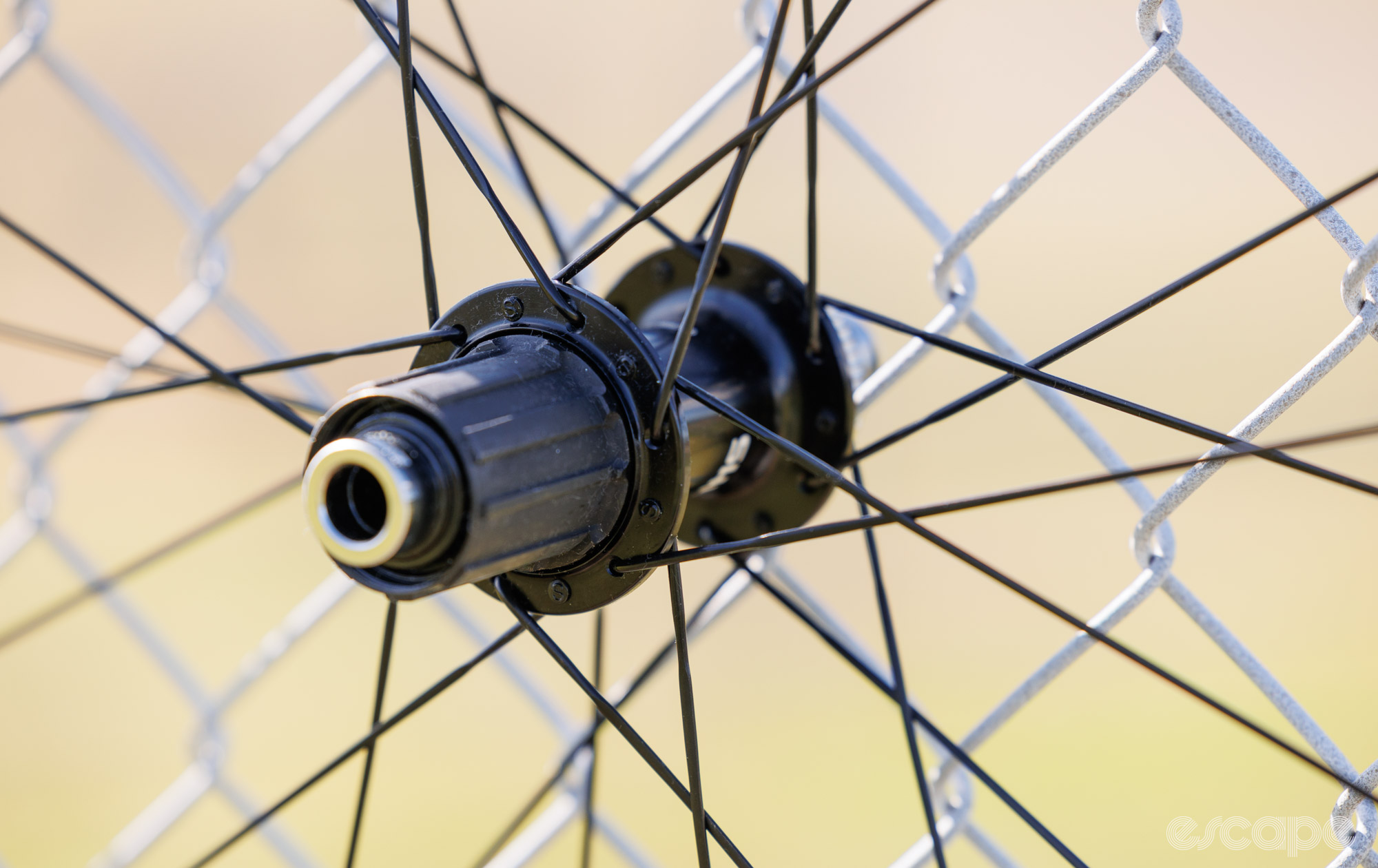
And then we get into the things you typically only hear about after a few neglectful years of use. Shimano’s freehub bodies are as serviceable as a disposable Kodak camera (not intended for repair although not impossible to do). Thankfully they are reliable and ultra tough against cogs digging into them, but any bearing or freewheeling issues from the pawl-driven part will likely result in needing a full hub service with the installation of a new freehub body (thankfully low in cost).
Similarly, those cup-and-cone bearings should be treated to occasional cleaning and greasing to keep them spinning smooth and prevent them from wearing out the non-replaceable outer bearing races. By contrast, neglecting a cartridge bearing hub likely means needing new cartridge bearings.
Servicing woes aside, the steel freehub body, steel bearing races, and threaded axles of these Shimano hubs all add significant weight over many simpler cartridge-bearing hubs. And this extra weight in the hubs prevents the 105 wheels from reaching the desirable 1,400-1,500 g weight range of some similarly priced competitors.
Performance and the ride
I’m going to assume that if you’re considering a wheelset like the C46, you’re most likely considering an upgrade from whatever alloy-rim wheelset came with your road bike. In many cases, these stock shallow-rim wheels tip the scales between 1,700 and 1,900 g, and offer little-to-no aerodynamic benefit.
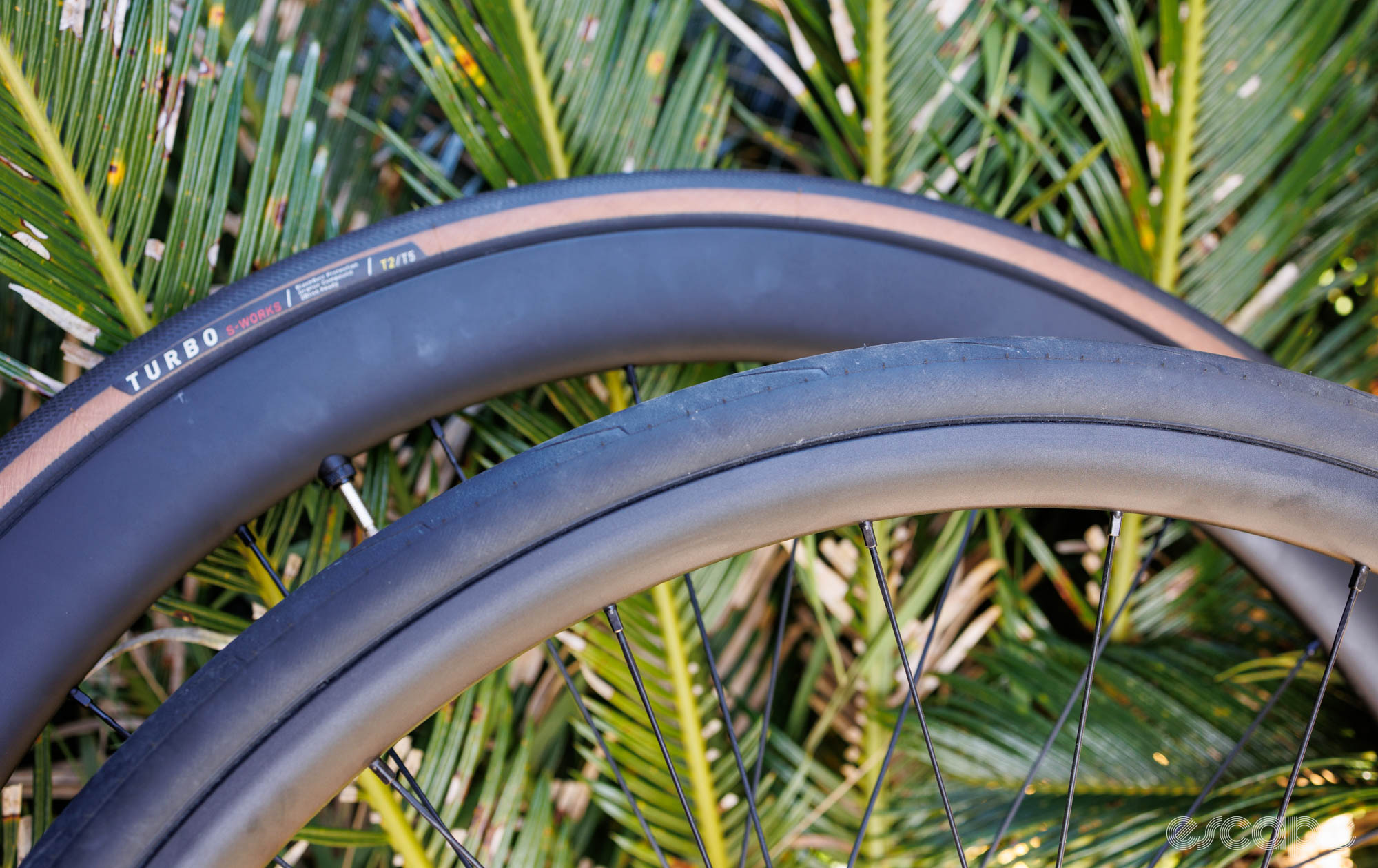
From an aerodynamic sense, a wheelset like the C46 is absolutely going to offer some speed advantage over such a shallow aluminium wheelset, and it’s not all that unusual to see a rider’s average speed on a solo ride increase by 1 km/h or thereabouts. Unfortunately, I don’t have any controlled data on exactly how much drag you’ll cut or whether the C46 holds pace with similarly priced carbon wheels. Likewise, Shimano has long stated that it does extensive wind tunnel testing to create a competitively fast product. Still, unlike many competitors, it seemingly keeps that data in a locked filing cabinet.
That all said, many known-to-be-fast aerodynamic wheels typically follow a design principle where the tyre width is used as the frontal edge of the airfoil shape, and therefore needs to be narrower than the widest point of the rim. This is commonly known as the 105 Rule, where the rim width ideally sits at 105% of the measured tyre width. In the case of the C46, its 28 mm external width means you’ll need a tyre in the 25-27 mm range to achieve the most aerodynamic benefit. Using a far-more-common 28 mm tyre (or wider) is likely to disturb the air before it hits the rim.
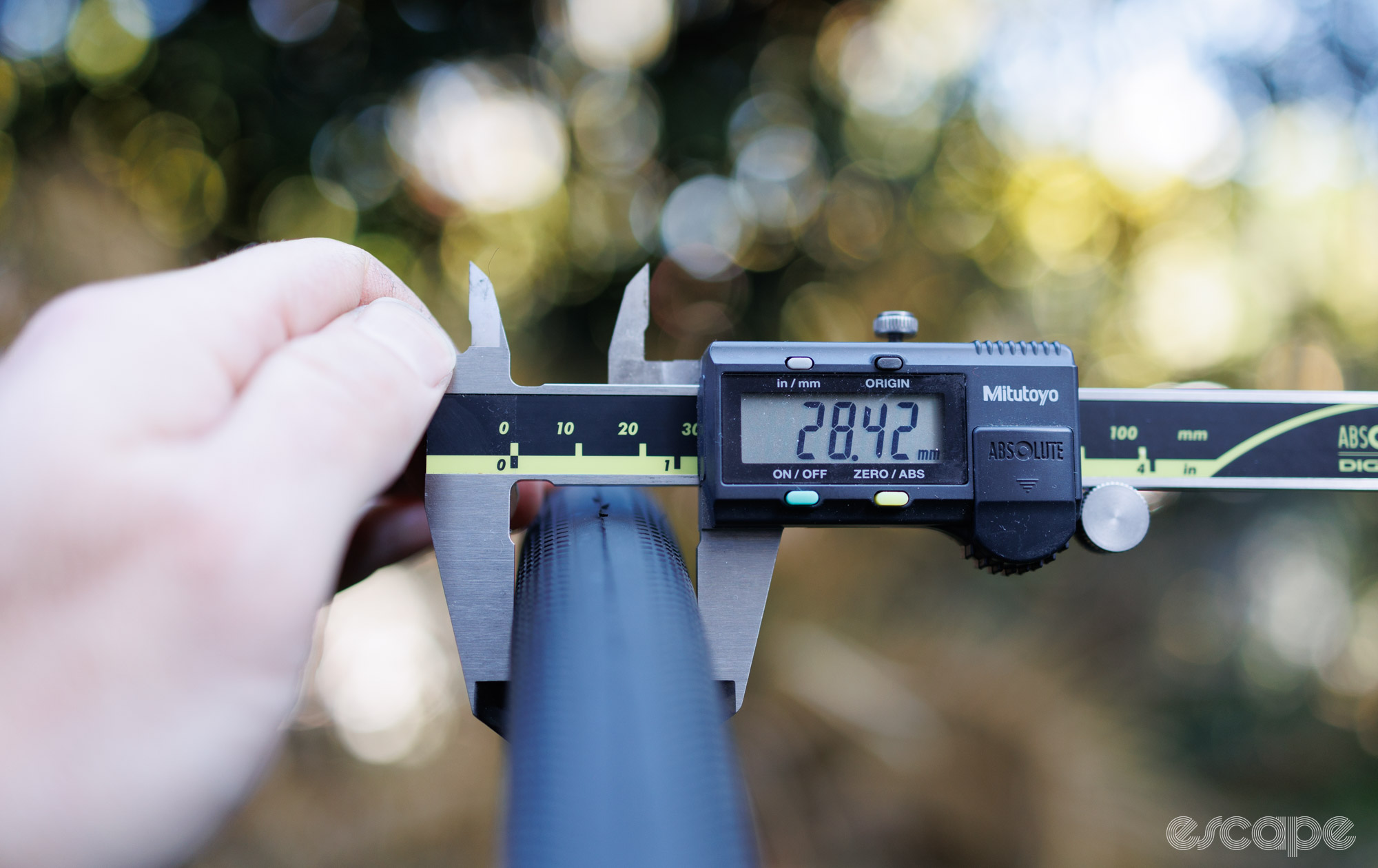
Doing a little back-to-back testing between these 105 wheels and some affordable Fulcrum Racing 5 DBs did result in a bike that felt easier to keep at speed all while revealing a marginal improvement in said speed. Changing to these deeper U-meets-V-shape rims also introduced a minor difference in handling, with a subtle tug at the bars anytime the wind blew. This increased sensitivity to crosswinds is a common trade-off with deeper wheels, and I’d say the Shimanos are decently mannered but not exceptionally stable in this regard.
In other areas these wheels get on with their job. There are no signs of unwanted flex or severe harshness, no pops or creaks from the spokes under stress, and no fear of whether you'll be able to remove the tyre in the event of a flat. The wheels feel solid in use and are exactly the sort of component that you quickly forget about.
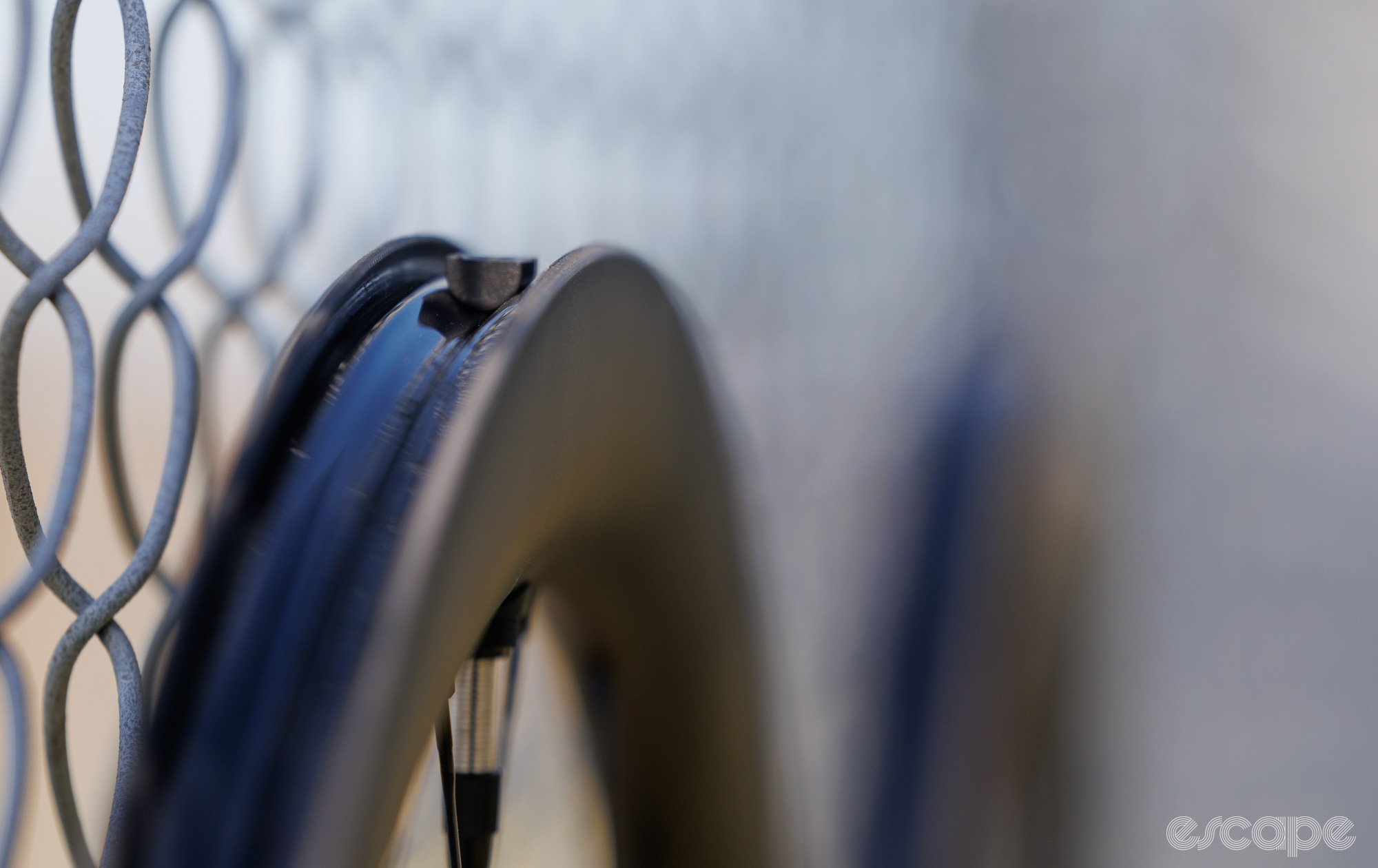
Further helping to forget about these wheels is the fact that Shimano’s classic-style freehubs are some of the quieter-coasting options on the market. Those who appreciate bliss when riding will likely already have an appreciation for Shimano's hubs, while those who like noise will find a myriad of increasingly obnoxious options in the market (Hunt and Scribe come to mind, although both have recently gone to great efforts to reduce such noise).
Sticking with the freehub, the lowly 18 points of engagement can feel pretty slack when jumping on the pedals out of a corner. However, this sensation doesn't come with a speed loss when compared to a hub with quicker pickup.
The single exception to all of this was seen with the provided tubeless valves, which weirdly rattled within the rim unless the valve nut was tightened more than a fresh pickle jar. Historically I haven’t had the best experiences with Shimano’s supplied tubeless valves so this wasn’t the first time I considered replacing Shimano’s valves with something else.
Wrap up
In many ways Shimano’s 105 carbon wheels are the quiet achiever in the bunch. Or to use an overused car analogy, they’re the white Toyota Corolla of the rental fleet. They're built to meet a task with minimal risk of warranty return or safety fears. They do everything asked of them, and with occasional hub maintenance, they will continue to do so for a long time. And for added points, the bladed spokes are a welcomed sight at this price, while the internal rim shaping and dimensions result in what I consider the benchmark in easy tyre fitment with secure tubeless setup.
However, I also can’t help but feel that Shimano’s RS710 wheels are a few years behind the market leaders in what buyers look for. The use of a hub system that’s locked into a single type of freehub fitment and axle dimension just feels dated and limiting for how quickly the market can (and does) change. And these hubs do the wheels no favours on the scales.
Likewise, the 21 mm internal width is one I gravitate toward for pure road wheels, but from an aerodynamic sense, the external rim width is better suited to 25 mm tyres than it is to the more current 28 and 30 mm treads that most should (and will) run. And while spending more for Ultegra wheels will get you marginally deeper rim profiles, those profiles also carry the same aerodynamic limitations of the narrower 28 mm exterior width.
And as a final mark against the giant that is Shimano, it is one of the last big brands selling carbon wheelsets without any form of rider care program. A one-year warranty covers the wheels against manufacturing defects, and that’s a far cry from the warranty programs of multiple other brands (such as Easton, Enve, Zipp, Bontrager, Roval, Hunt, Reynolds, Scribe, and countless others) that will replace your rims and rebuild your wheels for free or at a minimal charge in the event of a whoopsie. Sometimes such programs come with costly logistical hurdles (shipping wheels back), but having the option is still better than nothing. Thankfully Shimano sells individual front and rear wheels as a small concession.
Shimano’s 105 carbon wheelset is a safe play and undoubtedly sufficient to keep its owners happy for a good period. However, with safety fears of braking on carbon rims now in the rearview mirror, you don’t need to look all that far to find more adaptable, lighter, and perhaps more aerodynamic options at comparable prices from other trusted names. And that leaves me pondering who I’d suggest these perfectly fine wheels to.
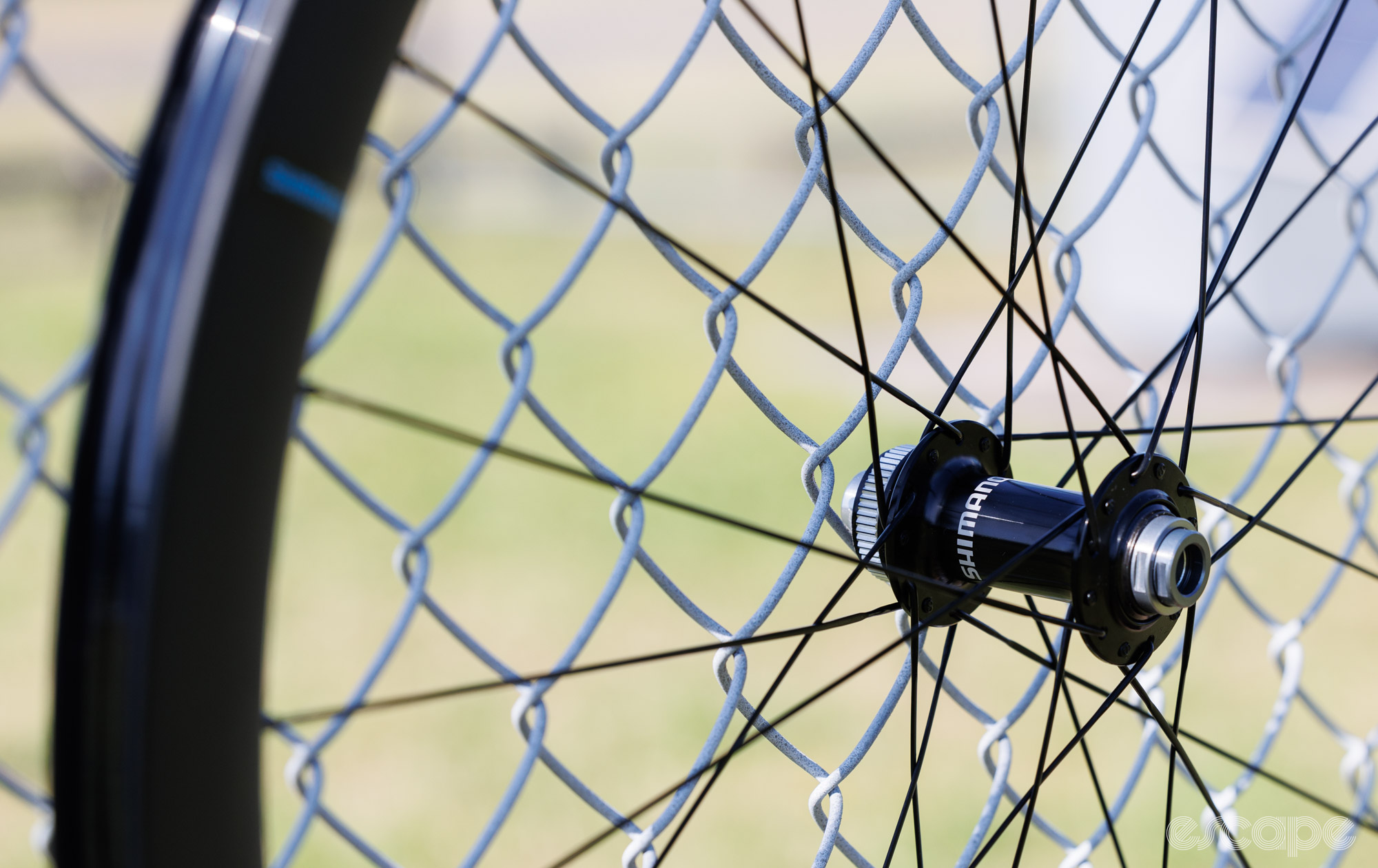
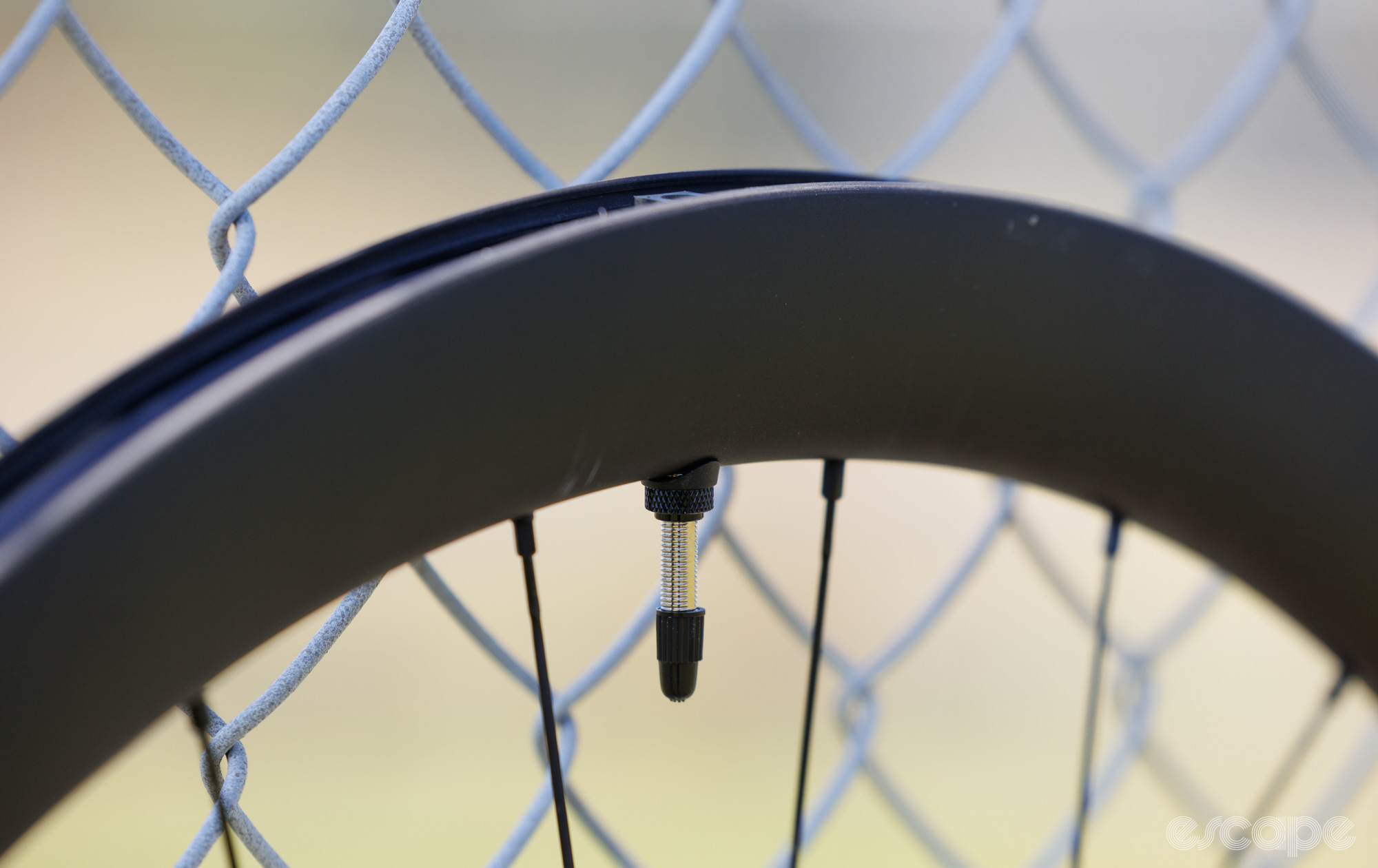
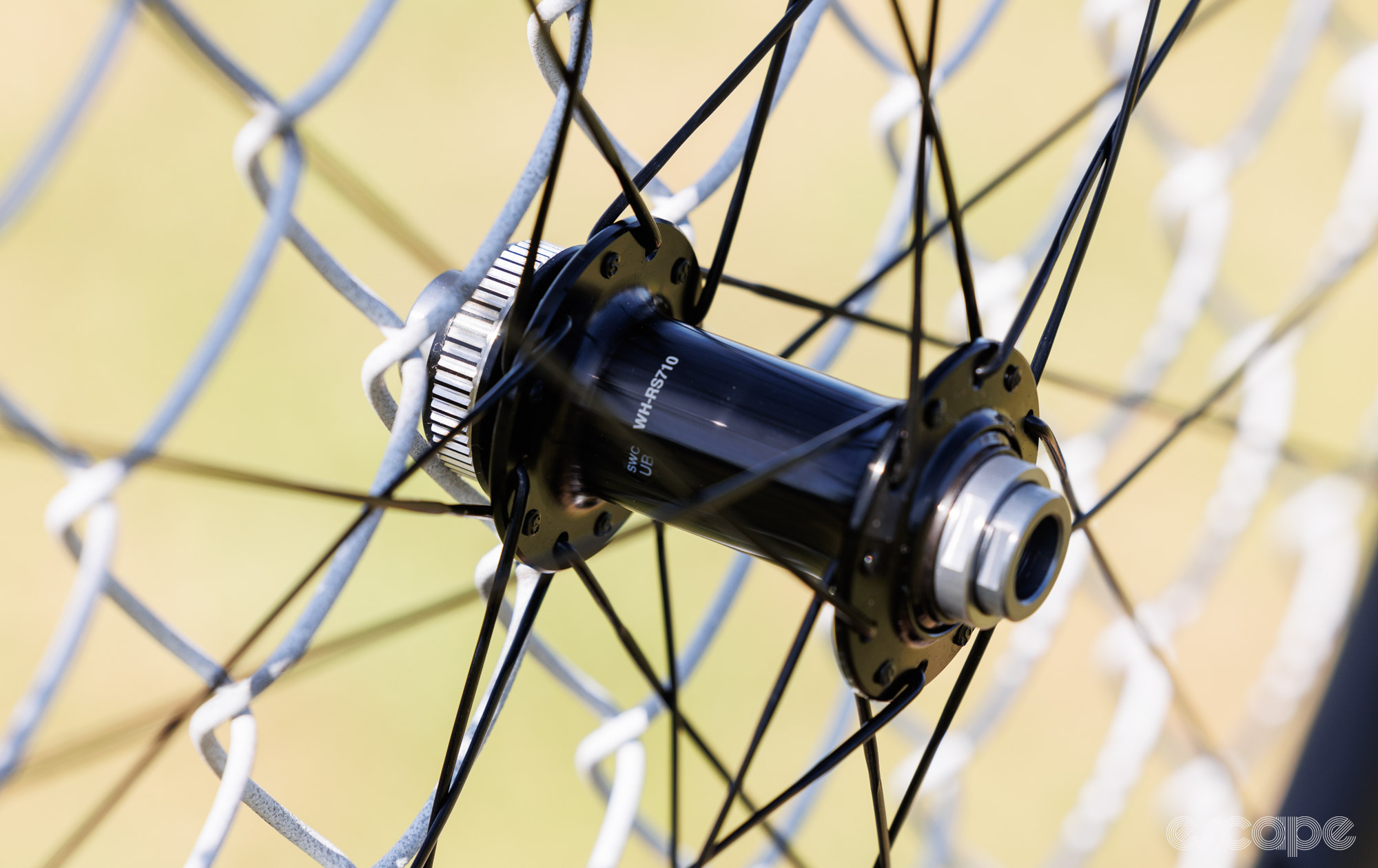
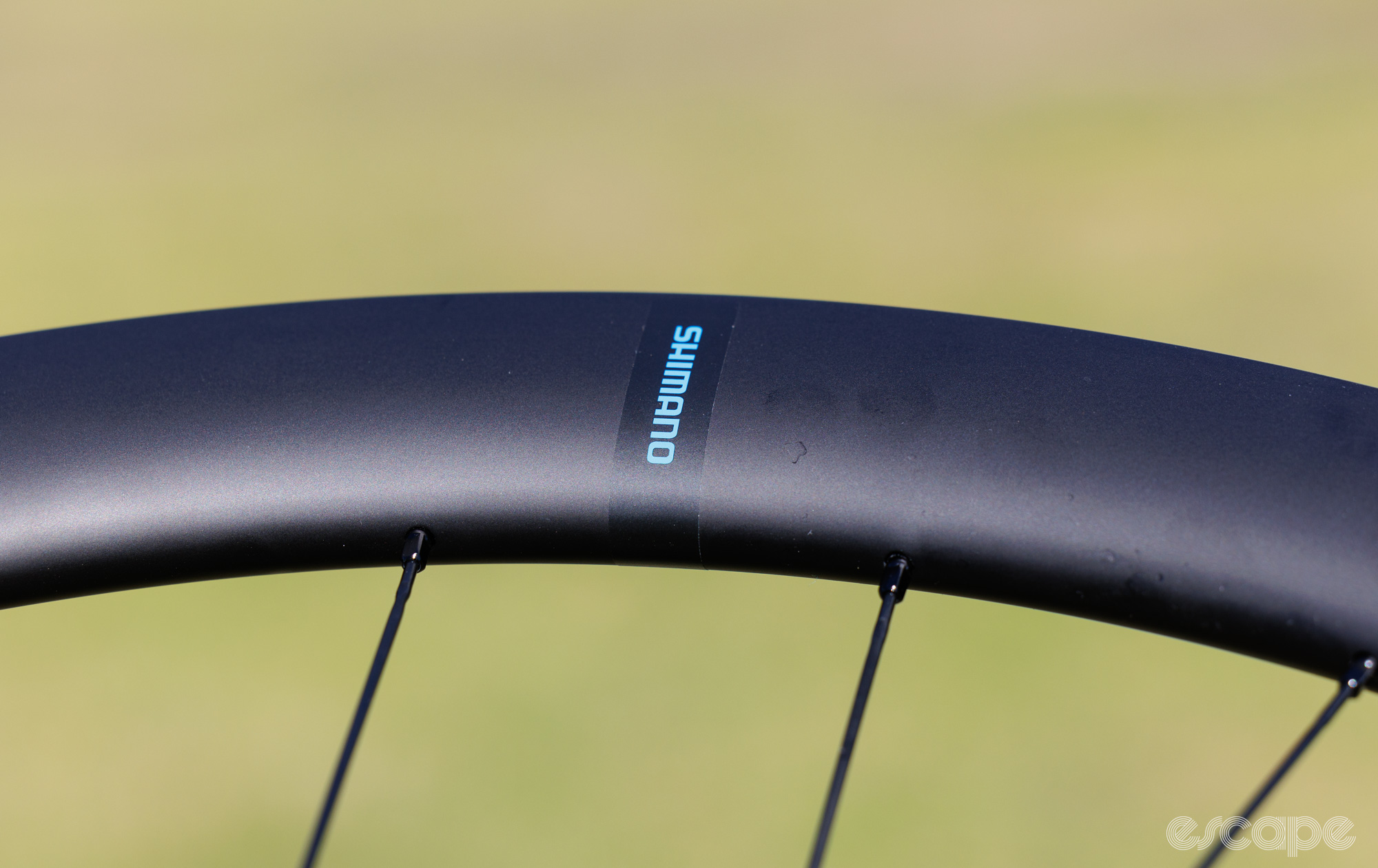
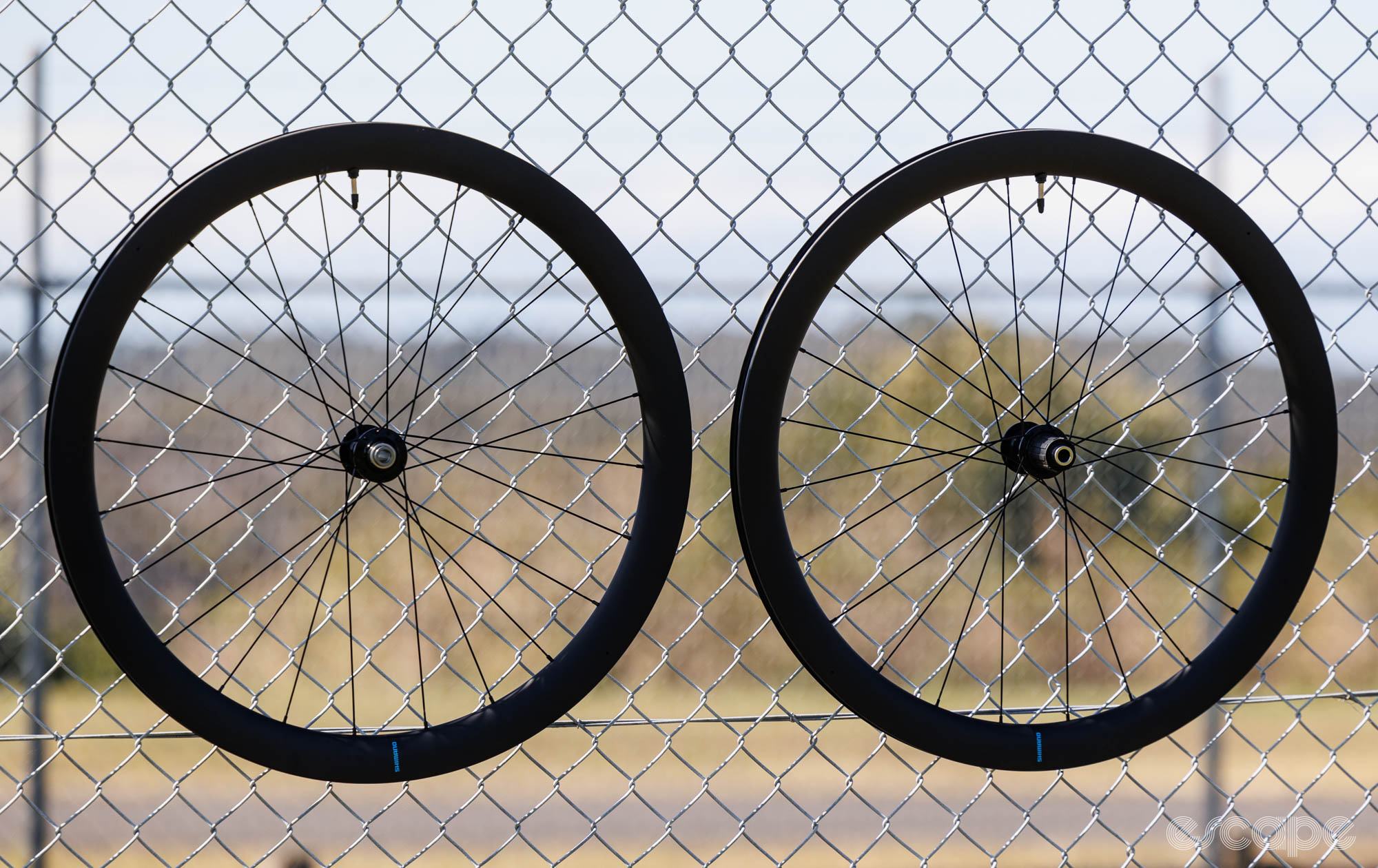
Did we do a good job with this story?

